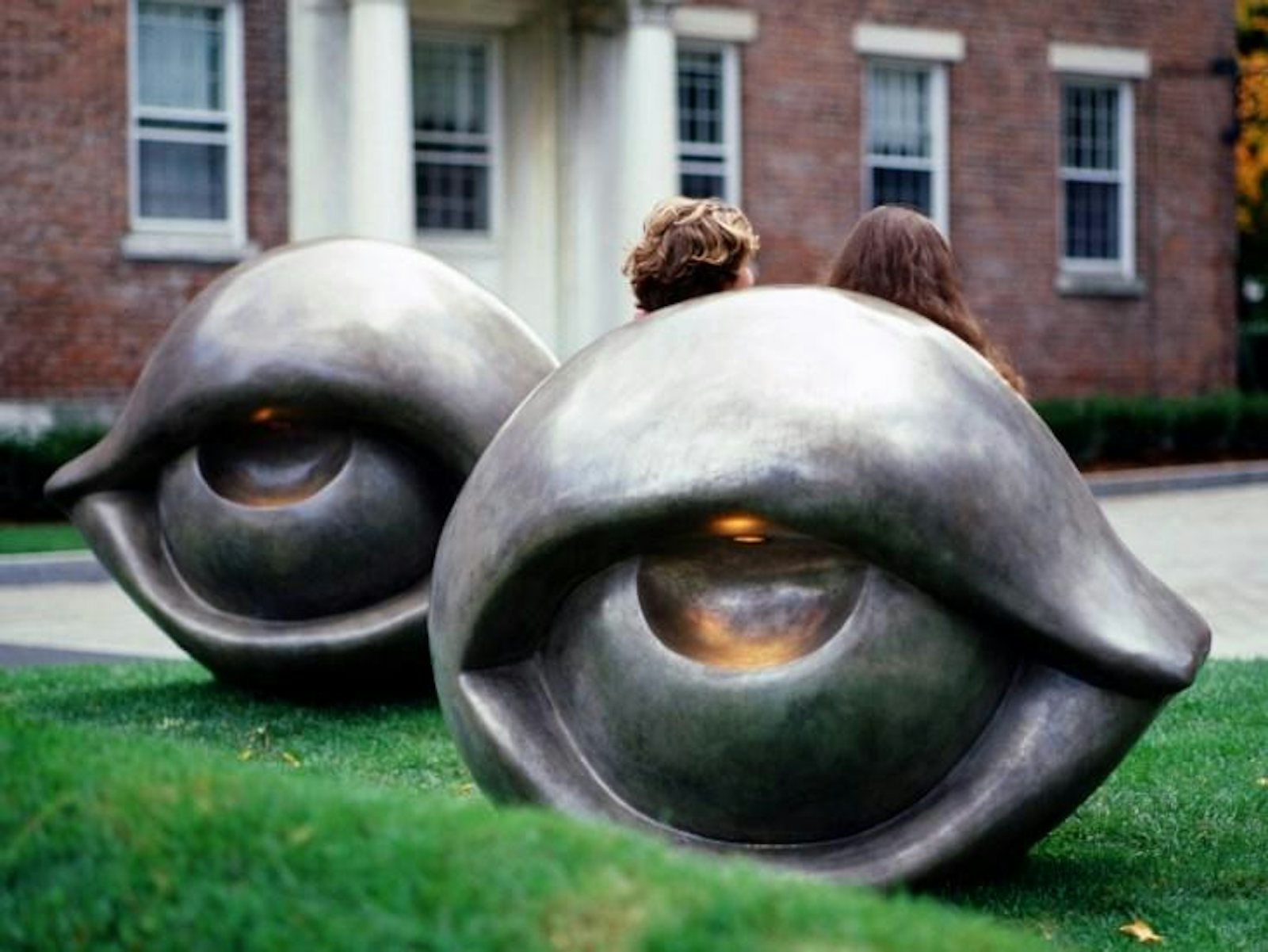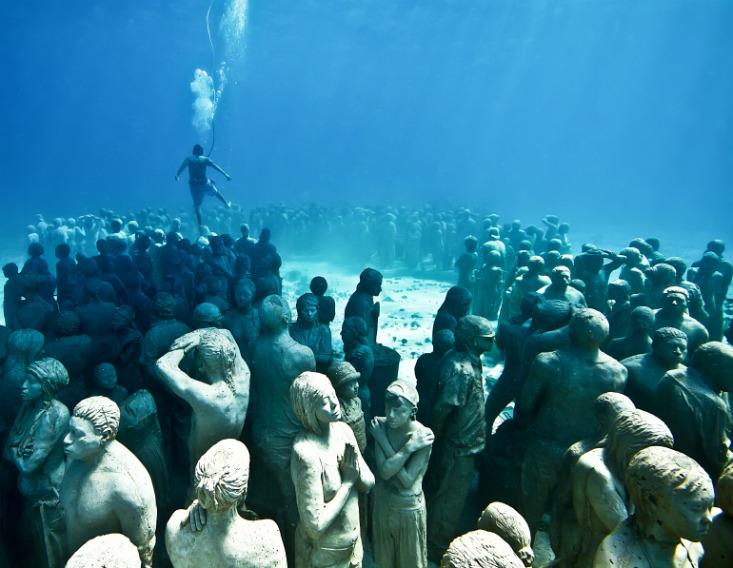
The modern artist David Hockney once said that “art has to move you and design does not, unless it’s a good design for a bus.” Such a polemic statement implies that there can be no blurring between pure art and usefulness. But an artwork’s function and the viewer’s interaction with it can be an integral part of its creative expression.
Product design is one example of how art and utility can work together, whether it is a clock that tells time by the fading of leaves, or high-concept cookware, such as this sculptural cheese grater. These things are pleasing to the eye, but they don’t move you the way Hockney described; they’re more like a good design for a bus than museum material.
So is it possible to get that immersive, artistic experience from something that is truly practical, like the transcendence one can feel just by standing in front of a Van Gogh? Some artists make it their lives’ labor to create just that kind of work.
One example of such functional sculpture is Jason deCaires Taylor’s mesmerizing and eerie underwater sculptures that serve as ready-made marine habitats. He now has several submarine sculpture parks, including MUSA, the Museo Subacuático de Arte (Underwater Art Museum; see image above), which is essentially a museum and reef composed of more than 500 sculptures. (Taylor’s work is also one of many kinds of art that highlight damage humans do to the environment; see Becca Cudmore’s earlier Facts So Romantic post for more examples.)
However, you needn’t go to a museum, or under the Gulf of Mexico, to see where the lines between art and function blur: Functional sculpture is all around us—from benches to coral reefs, bike racks to towering structures that act as air filters. Here are six of the most creative and intriguing functional sculptures.
Wendy by HWKN for PS1 MoMA’s Young Architects Program in New York (2012)
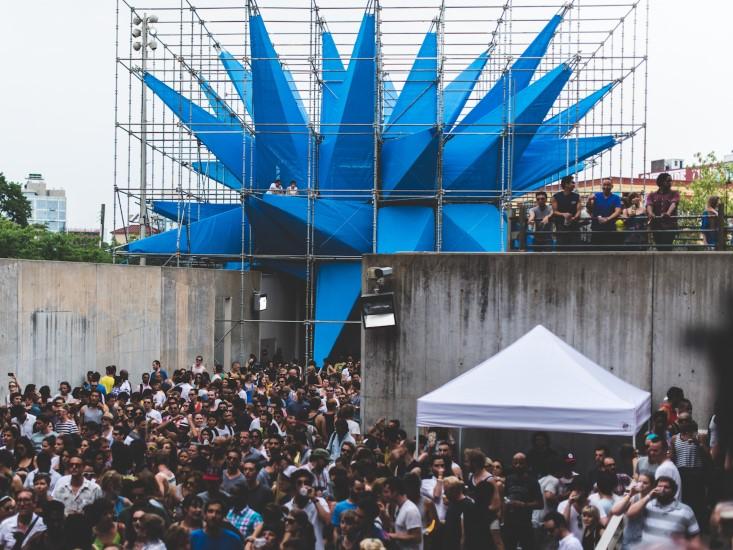
Made of nylon sheets held together with scaffold, Wendy was designed to provide a comfortable, shady place to relax for the audiences of PS1 MoMA’s annual “Warm Up” outdoor concerts. In addition to the sheer impressiveness of its design, Wendy also packs some impressive technology: The nylon sheets were sprayed with the mineral anatase titanium oxide (TiO2), which speeds up a process called ultraviolet photocatalysis—the breakdown of organic matter by UV light. When sunlight hits the nylon, the TiO2 accelerates the breakdown of organic matter in the air—from particulate matter to more harmful volatile organic compounds like formaldehyde. According to the designers, while it was deployed, Wendy cleaned the air as much as taking 260 cars off the road. In addition, the ends of the spiked arms of the sculpture blasted our mist, cool air, and music, enhancing the auditory and tactile experience of concert-goers.
WindNest by Suprafutures; Pittsburgh (in progress)

After four years of planning, WindNest has finally gotten the push from funders to begin prototyping what will be America’s first functional sculpture-slash-energy generator. The design of WindNest incorporates a small wind turbine held in a Teflon-fabric-and-fiberglass structure that has been tested in a wind tunnel for integrity. The fabric is extremely thin, which, combined with the pod-like design, makes WindNest look almost like blossoms on a stem. A third of the pod will also be covered in a photovoltaic material, allowing WindNest to generate approximately 150 MWh each year—about 20 homes-worth of electricity.
Spiral Jetty by Robert Smithson; Great Salt Lake, Utah (1970)
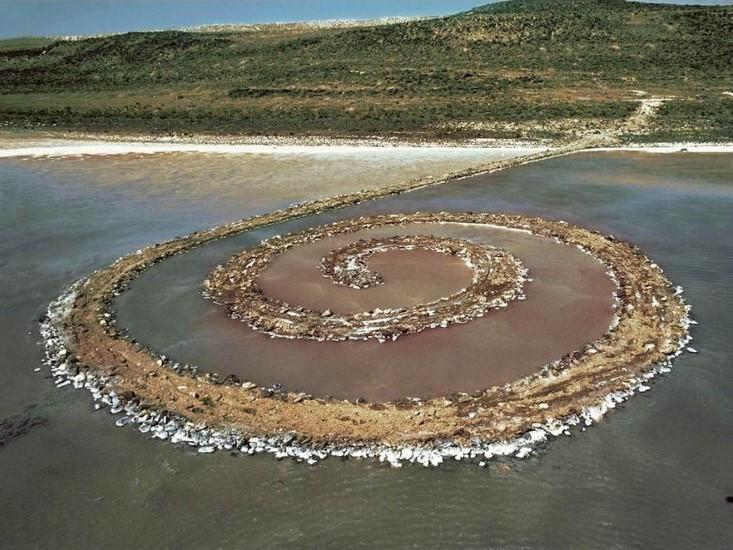
Stretching out into reddish-brown water in the Great Salt Lake, Robert Smithson’s Spiral Jetty is considered one of the greatest pieces of land art ever created. It is made from mud, precipitated salt crystals, and rocks taken from the lake. The work spirals for 1,500 feet and is 15 feet wide—plenty big enough for people to take a long stroll on.
Part of what makes this re-imagined jetty so striking is its context: Surrounded by water turned red by algae blooms, the salt appears an even starker white than if it were surrounded by more typical gray-blue lake water—especially when it is highlighted by direct sunlight. Smithson wrote that Jetty should draw the viewer’s attention to the anthropogenic marks on the lake. It was “evidence of a succession of man-made systems mired in abandoned hopes.” The work was designed to play with functionality: It is a jetty and can be used as such, but it is also conveys entropy and the instability of the lake’s delicate environment.
Eye Benches, Louise Bourgeois; situated throughout the U.S. (1990s to present)

Bourgeois’ work has always attracted attention: She was the first female artist to be given a retrospective at the Museum of Modern Art in New York, and her sculptures are exhibited around the world. Her most famous piece, Maman, a giant, bronze spider-like creation, has been reproduced all over, from Spain’s Guggenheim to the Qatar National Convention Center in Doha.
The Eye Benches are crafted by Italian stone masons from granite sourced from Zimbabwe and have a disembodied, slightly lazy-eyed gaze. Their curved, high backs almost entirely the people seated on them from view.
Unlike much furniture design, which privileges comfort and function over more abstract concepts, these benches are Dali-esque sculptures designed to arrest the viewer in their own gaze, their true function obscured at first glance. Bourgeois once described her work thus: “Whether it is an eye that sees the reality of things or whether it is an eye that sees a world of fantasy…It is the quality of your eyes and the strength of your eyes that are expressed here. Nobody is going to keep me from seeing what is instead of what I would like.”
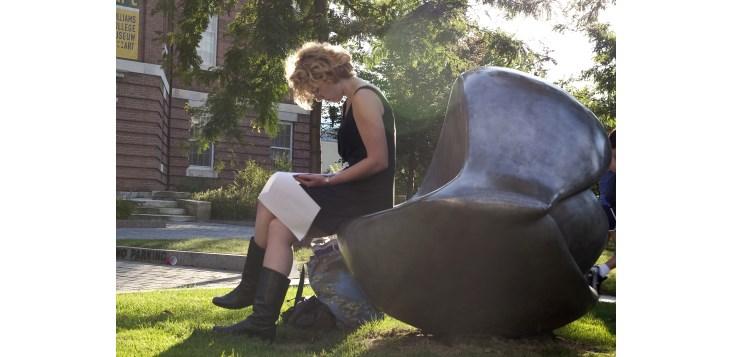
Bike Racks by David Byrne; New York City (2008)
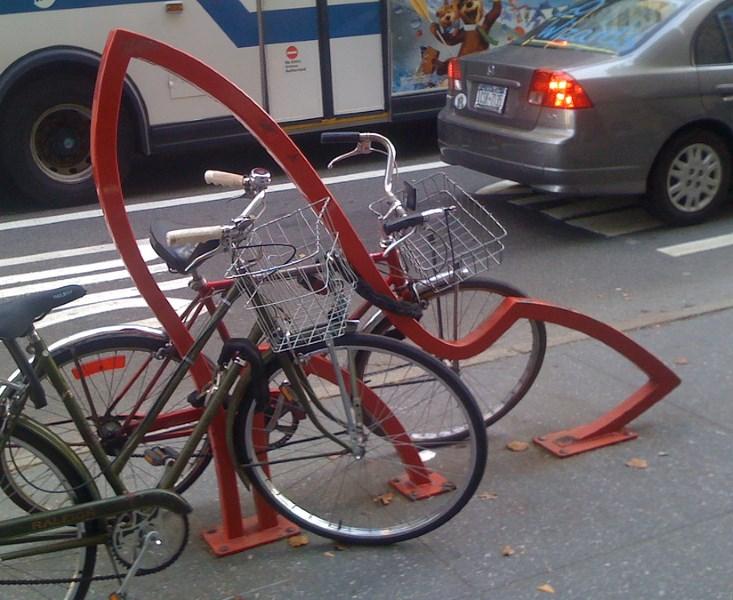
Artist, avid cyclist, and former Talking Heads frontman David Byrne collaborated with the NYC Department of Transportation and the PaceWildenstein art gallery to create nine bicycle racks and situate them throughout Manhattan and Brooklyn. Each rack is inspired by the area it serves: “The Hipster,” for instance, was shaped like a Fender guitar and installed in the midst of hipster-mecca Williamsburgh. Another, “The Wall Street,” was situated in the Financial District and shaped, fittingly, like a dollar sign.
The racks are made from the same materials as the more conventional U/M-shaped racks. Unfortunately for New York cyclists, the racks were only in place for about a year—the city’s Design Commission, which has the final word on any public art in New York, decided two of the designs were “in bad taste” (a liquor bottle–shaped design that was yet to be assigned a neighborhood, and a design to be placed by the New Museum that made reference to the building’s shape) and subsequently decommissioned the rest. Since then Byrne has made racks for the Brooklyn Academy of Music, which you can view here.
Roden Crater by James Turrell; Arizona (in progress)
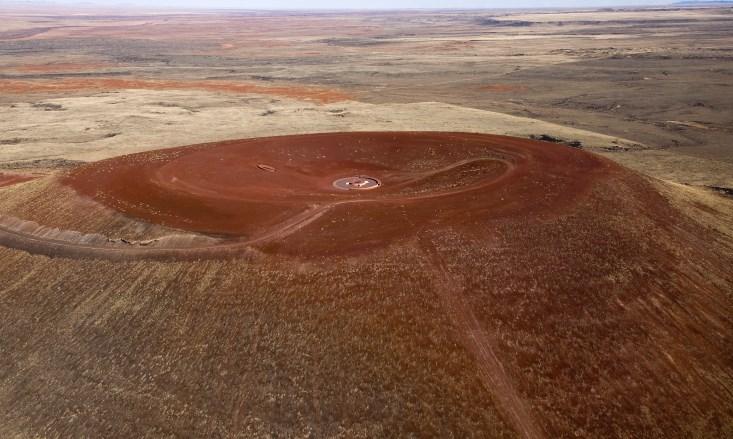
A monumental piece that combines natural geological features, architecture, and our fascination with stargazing, the Roden Crater is nothing if not breathtaking. The work is situated within a 400,000-year-old, 600-foot-tall extinct volcano cinder cone near Arizona’s Painted Desert and the Grand Canyon. Sitting at about 5,400 feet above sea level, the cone—far from civilization’s light pollution—provides an excellent vantage point for what is essentially a naked-eye observatory.
Turrell says he was influenced by the design of ancient observatories such as those at Machu Picchu and Angkor Wat, choosing to build out spaces that would be lit in specific ways according to the time of day or year, allowing the visitor to experience their surroundings and the sky in an uniquely tailored way. As Turrell puts it, “The work I do intensifies the experience of light by isolating it and occluding light from events not looked at. I have selected different portions of the sky and a limited number of events for each of the spaces.” Essentially, from various points within the crater, the viewer will see very narrow slivers of sky from which specific astronomical phenomena can be seen depending on the time of year and day. And just like the observatories at Machu Picchu, the solstices are intended to be particular highlights.
Though Turrell has been working on the piece for almost 40 years, it’s not quite done, and few people have actually been in the crater, which is still not open to the public . Environmental designer Eric Lindeman is one of the lucky few. He told The New York Times that the crater is “a great example of art and architecture becoming one.” “I would not hesitate to call it one of the natural wonders of the world.”
Claire Cameron is Nautilus’ social media & news editor.



















